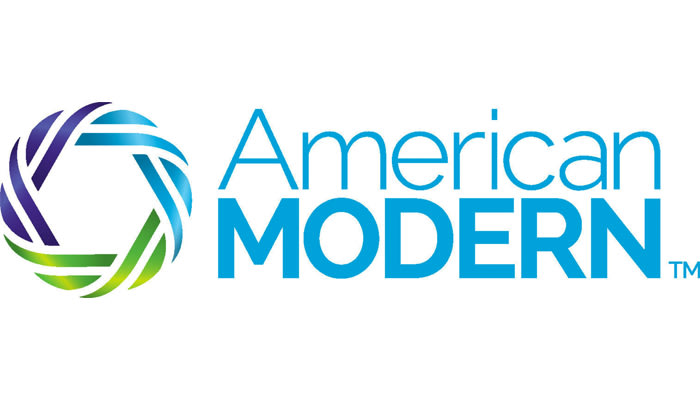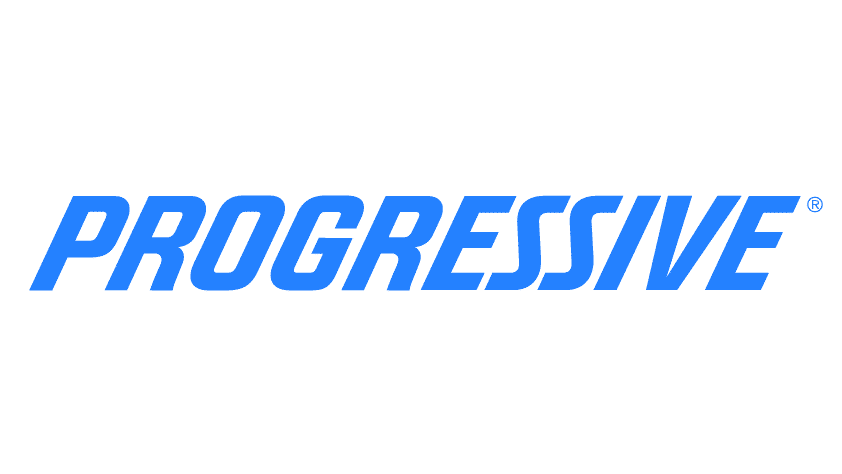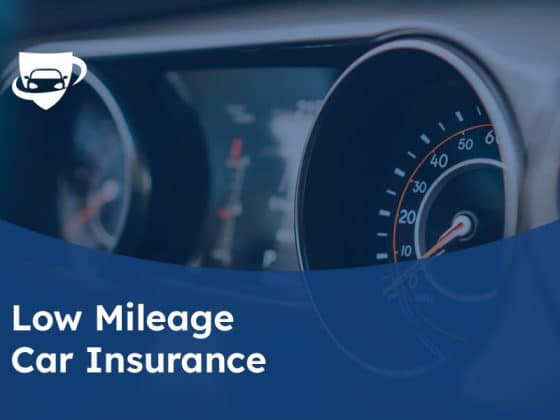If you are reading this article on classic car insurance, you must love cars. The smell of diesel gets your juices flowing, and the roar of engines gives you an adrenaline rush. For you, automobiles are not just a convenient and comfortable mode of transportation; they are also a way of life and a thing of beauty. Why else would you invest so much money, time, and effort in that beautiful classic car of yours?
But accidents happen, and in order to be carefree about your prized possession, you will surely want some sort of collector car insurance. That’s why we at Carsurance.net took the effort to inform you about all the aspects of this type of car insurance. We explored how different types of coverage work and which company offers the finest protection for your rare vehicle.
Here you will find the best value coverage, insurance for cars under restoration, and the optimal protection plan for a collectible car that’s driven regularly. Getting the right model of an exotic car and maintaining it may be difficult, but finding the proper insurance for it is easy. We studied nearly every reliable classic car insurance review online to make sure we left no stone unturned in our task to provide you with all the options you will need. Just read on below.
What Is Classic and Collector Car Insurance?
Collector cars are different from standard vehicles in two aspects. First, they are not used as often as regular cars. It would be extremely risky for a car collector to drive a $100,000 1957 Chevrolet Corvette to work every day during rush hour. Some insurers, like Safeco, will provide extended coverage, but any underwriter’s stomach would turn upside down if you told them you would like to buy classic car insurance for your $240,000 1957 Cadillac Eldorado Brougham when you drive it 30,000 miles per year.
Second, a classic car’s value usually increases as it ages, especially if the vehicles are cared for. That’s because the rarity of the model increases over time. Meanwhile, the value of, say, a 2012 Kia Sportage or 2015 Ford Escort decreases—there are a lot of those vehicles in the market, and there’s nothing that makes them special.
Simply put, a newer regular car is better than an older model, so it’s worth more. That’s why regular cars are usually insured up to their actual cash value only, meaning that in case of an accident, you get the amount equal to the price of the same model in the used car market.
The process of insuring classic cars functions differently. They are usually covered for a guaranteed agreed value, meaning that the insurance company will typically collect data from a respectable appraiser or a reputable website to estimate the exact value of the vehicle for the duration of the policy.
The Best Companies for Classic Car Insurance
Best Overall Company

This is a toss-up between Hagerty and American Modern, but we have to lean towards the latter. It covers many different types of vehicles, and it provides all the standard collector car auto insurance options, like agreed-value insurance, broad usage, unlimited miles plans, spare parts, towing, pet coverage, deductible options from $0 to $10,000, flexible payment options, and much more. American Modern also offers a substantial number of discounts, like VIN etching (15% premium reduction), accident prevention courses (5%–10% premium reduction), and electronic vehicle ID (20% premium reduction).
What is perhaps the most significant advantage of American Modern is that it is a subsidiary of Geico insurance, which is, in turn, a subsidiary of one of the most financially potent companies in the US—Berkshire Hathaway. The greater the financial strength of a company, the fewer reasons for a customer to worry that the company won’t pay claims adequately.
This is especially important for vintage car insurance because it’s actually quite common for the insured vehicle’s value to exceed a couple million dollars. Additionally, regular Geico insurance scored exceptionally well in our review. All these factors indicate that you cannot go wrong with American Modern.
Best Value Coverage

There are too many factors that determine the rates of a classic car to make a definite conclusion on which company offers the cheapest classic car insurance. However, we did a comprehensive analysis for regular vehicle insurance, and we found that Progressive is the cheapest company and Geico comes in as second. Progressive offers insurance for classic cars on its own, while Geico operates through American Modern. Whichever company you choose out of these two, it’s very likely that they will offer affordable rates. Companies like Hagerty advertise cheap classic car insurance too.
Best for Regular Driving Use

Safeco is not the best regular auto insurance company per our analysis , but it offers excellent terms if you plan to use your classic car on a regular basis. The company allows up to 10,000 miles yearly of regular use, which is roughly equivalent to what most drivers cover with their standard vehicles.
On the other hand, Safeco has more stringent criteria when selecting which vehicles qualify for this type of insurance program, requiring them to be at least 10 years old. American Modern is also a great choice for customers who plan to use their classic car often.
Best for Cars Undergoing Restoration

Hagerty provides the best classic car insurance if the vehicle is under restoration. Since the value of the car rises as the restoration progresses, this company automatically increases the vehicle’s Guaranteed Value by 10% quarterly, up to a maximum $25,000. Additionally, Hagerty offers up to $750 in automotive tools coverage, plus specialized towing services.
What Does Classic Car Insurance Cover?
Besides the difference in insuring a vehicle up to its guaranteed agreed value, classic car insurance works in a similar manner to regular car insurance. In most cases, you will be able to purchase the same basic coverage, such as collision, comprehensive, property damage liability, bodily injury liability, medical expenses, personal injury protection, and underinsured/uninsured motorist protection. Additionally, many companies will offer the most common optional coverage available for regular cars and some designed especially for collectible cars. These include the following:
Personal Property Coverage – In case your personal belongings are stolen from your vehicle or damaged in an accident, this option will cover the expenses.
Roadside Assistance – If your vehicle breaks down, this coverage can help. It includes towing, battery jumps, tire replacement, locksmith assistance, and other similar services. This is especially useful for antique car insurance, since older cars are not built to be as reliable as newer cars.
Travel Emergency Coverage – This option usually covers expenses such as meals, lodging, and transportation, as well as the cost of a rental car in case a vehicle isn’t working far away from the insured’s home.
Pet Coverage – This option covers veterinary expenses in case your furry friend was injured in an accident. It also covers costs associated with its passing if the worst happens.
Diminishing Deductible – If you purchased collision coverage, many insurers offer to lower your deductible by $100 for every year without an accident.
No Attendance Coverage – This is an option designed for collector car insurance. It extends the coverage to a vehicle that you are not attending or is not in your care and custody. It is used to protect you during car shows, parade laps, and similar events.
Spare Parts Coverage – Backup parts for collector parts can be expensive and hard to come by. This option covers them up to an agreed value in case they are damaged or stolen.
Types of Collector Auto Insurance and How They Work
There are many categories of collector car insurance, depending on the type of vehicle you want to protect. Some insurers like Hagerty will insure almost any valuable vehicles, including former military vehicles or an antique tractor. Not all insurers are this tolerant, however. Most of them will accept these types of vehicles:
Classic/Antique Cars
These are stock vehicles that are considered valuable and collectible and are usually older than 25 years. Hagerty, for example, sets the limit at the year 1979. Shelby Cobra, Ford Mustang insurance, Charlotte Corvette, and Dodge Charger all have classic models that are the perfect example of what many collector car insurance companies would take.
Modified/Replica Cars
Many insurance companies will let you purchase coverage for vehicle add-ons/modifications with your regular policy if the value of the modified parts isn’t too high. However, if the vehicle had an extensive modification or is a replica of an older car on a newer chassis, you will have to look for classic car insurance. What qualifies as an extensive modification usually depends on the insurance company, but the limit often refers to structural modifications to major vehicle parts or any non-factory addition that is worth more than $10,000.
Race Cars
This coverage is designed for either street-legal or non-street-legal race cars. The most common coverage protects the vehicle from any damage while it is resting in storage or being driven in a trailer to a race track. There is also an option to cover vehicles during short drives or parade laps. Coverage for a car during a race is more expensive, and the policy is event-based, meaning you are purchasing insurance just for a single race. All of the best collector car insurance companies will offer this option.
Newer Exotic Cars
This is the insurance for cars that are newer (made after 1979 or less than 25 years old, depending on the insurer) but still have a high value, such as supercars, exotic cars, and limited or special edition models. Usually, the value of the vehicle has to exceed $3,500, and the collector car insurance company will require the vehicle to be in excellent condition.
Cars Under Restoration
If you saved an old vehicle from the scrap pile and you are in the process of bringing it to its former glory, this is the coverage to get. You will need to demonstrate that you are actively restoring the vehicle by sending either high-quality photographs or restoration details. Many antique auto insurance providers will offer an option to progressively increase the guaranteed value as the car becomes worth more while it gets restored.
Insurance Eligibility Criteria for Classic Cars
The requirements for this type of car insurance depend on the company, but most of them follow relatively similar standards. Many insurers will require that you don’t use your classic vehicle on a regular basis, and they may put in a mileage restriction (Safeco is the most generous for regular users).
Additionally, some classic car insurance companies will expect you to drive the car only for recreation, parades, and auto shows, meaning you are not supposed to drive that expensive and rare vehicle to work during a traffic jam every day. Furthermore, companies will require an insured driver to prove that they belong in a safer category, by providing a clean driving record and by being older than 25 years.
Once you finally get your antique collector car insurance, you will need to take good care of your vehicle. This means keeping it in a safe and well-built garage that will protect the vehicle against the elements. Furthermore, you will be required to avoid partaking in any risky activities, such as car races (which are insured separately).
How Much Is Insurance for Classic Cars?
The cost varies greatly depending on the value of the vehicle that’s being insured. For instance, you can purchase an American classic in excellent condition, such as a 1971 Chevrolet Chevelle, for $25,000, or you can spend $6.5 million on a 1957 Maserati 300s. The collector car insurance premiums for these two vehicles would be vastly different.
Another factor that influences the final price greatly is the intended use of the vehicle. If your car is stored in a newly built and fully secured garage and it is transported in a specialized trailer to auto shows, where it is driven only on parade laps, it presents a significantly lower risk than a vehicle that is parked in front of your house and driven on a weekly basis.
Ultimately, all insurance companies consider these two factors when calculating a premium: how much is the insured property worth, and what are the risks it presents? That’s why antique collector car insurance is usually cheaper percentage-wise compared to regular auto insurance—the classic cars are a lower risk since they are driven less and the owners take greater care to preserve their prized property. Check the table below to get a rough idea how much it costs to insure 1965 Ford Mustang. If we were unable to get a classic quote, we requested the regular one.
Available Discounts That Reduce the Cost of Classic Car Insurance
Similar to standard insurance companies, classic insurance providers offer you discounts that can reduce your premium significantly. Here are some of the most common:
Winter Storage Discount – This is offered by Safeco, among others. If you choose comprehensive coverage during the winter months because you’re storing your vehicle in a safe, well-maintained garage, you can get a significant premium decrease.
Accident Prevention Course Discount – If you complete an accredited accident prevention course, you can get a discount on your collector car insurance that will last up to three years. In most states, this discount is available only for drivers who are over 55.
Anti-Theft Device Discount – Classic cars are an ideal target for thieves due to their high value. If you’ve installed anti-theft devices such as an alarm or starting system disablers, you can get a discount on your premium.
Multi-Policy Discount – If you are insuring multiple risks with a company that provides classic auto insurance, you will be able to get a discount.
Higher Deductible Discount – This is not a discount. It will help lower your insurance policy premium because you’ll have to pay more before any claim is covered by the insurance company. It’s good for people who can’t afford a higher premium or who would rather cover lower-cost claims out of pocket and have the insurance company cover the risk of higher-cost claims.
Reduced Usage Discount – If you do not use your collector car on a regular basis, a discount is available. Most classic collector car insurance companies set a limit of 5,000 miles and prefer that you drive your collector car on a weekend or a holiday (less traffic equals less risk).
Multi-Car Discount – The more vehicles you insure, the lower the premium will be. The good news is that if you use the same company for your regular and classic car, State Farm offers this option, you will still be eligible for a discount.
People Also Ask
The amount that you will have to pay for classic or antique car insurance can be higher than what you will have to pay for a regular car. That’s because classic cars are often way more expensive than regular cars. However, insuring a classic car is cheaper by as much as 40% in relation to the insured vehicle’s value when compared to normal auto insurance policies. Classic car owners take greater care of their rare and expensive vehicles and use them less—and insurance pricing reflects that.
Some companies like Hagerty let you complete an online quote, but given the unique nature of collector vehicles, it is always best to discuss the exact details with an agent. They have a lot of experience in handling collector car insurance quotes, and they will help you find the right coverage for your model.
There is no actual age limit here, as long as the car is a collectible. Most companies will differentiate between newer and older cars (Hagerty, for example, sets the limit at 1979), but all companies will take a newer collectible vehicle—meaning it’s rare and its value will increase as it gets older.
In terms of the amount you will need to pay for your policy, the classic car insurance cost is certainly higher than that of regular insurance. After all, we are talking about scarce and expensive vehicles here. The price of a classic car such as a 1967 Ferrari 275 GTB/4 can easily reach $3 million, while a pristine 1962 Ferrari 250 GTO can set you back for the bank-breaking $40 million. Thus, the yearly premium for classic car insurance is often higher than the cost of the average new vehicle, sometimes even higher than the average annual income in the US, ranging from $40,000 to $80,000 or even more.
On the other hand, the price of the insurance for a regular car, such as a 2018 Honda Accord (which costs around $28,000) is $2,280 on average for a 40-year-old driver. However, in terms of percentage, collector car insurance is usually less expensive, meaning that the yearly premium for a regular vehicle is around 8% of its value, while the annual premium a classic vehicle is often substantially lower.
Progressive, for example, estimates that their classic car insurance is 40% cheaper on average than their regular insurance . The insurance companies employ this pricing strategy because they correctly assume that the owner of a rare and expensive exotic car will treat their prized possession with significantly greater care than a regular driver treats their everyday car. After all, we would react differently if we scratched our Toyota Corolla as opposed to a $40 million Ferrari. That’s why it is not difficult to get cheap collector car insurance if you shop around a little bit.
For a company to consider it, the vehicle usually has to be older than 25 years, in excellent condition, and with a collectible value. However, if it’s a newer vehicle that is already collectible or is presumed to become so, you should be eligible for collector car insurance.
The limit most of these car insurance companies set is more than 25 years old. However, there’s a catch. Most companies will insure newer vehicles if they share the same characteristics as classic cars: that they are relatively rare and that their value is expected to increase as they age. This means that you will shop classic car insurance from the same type of companies for a 1964 Shelby Cobra or 2016 Bugatti Chiron.



